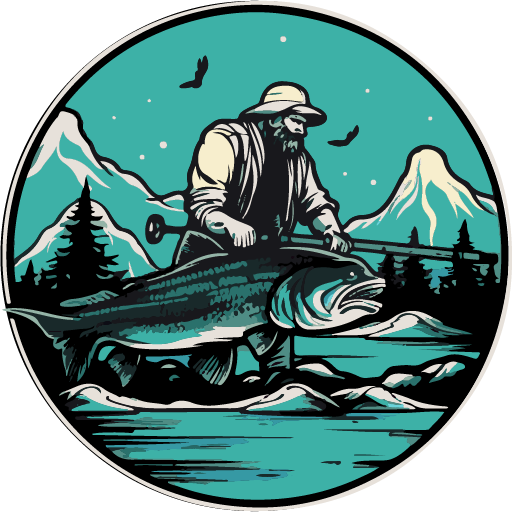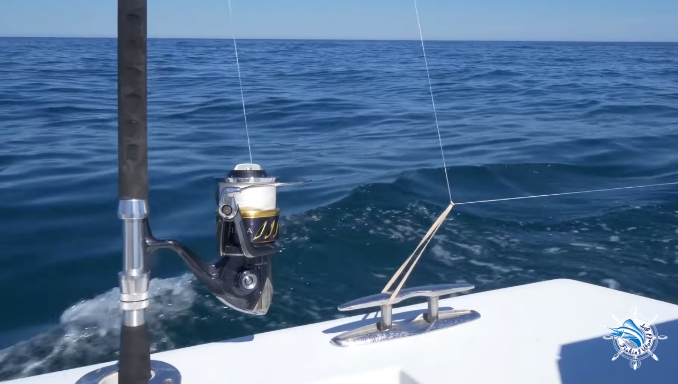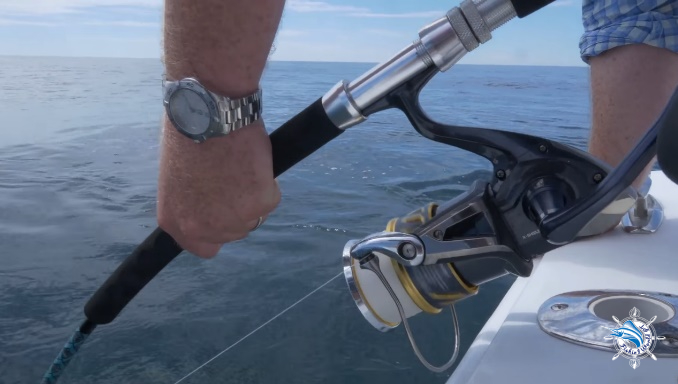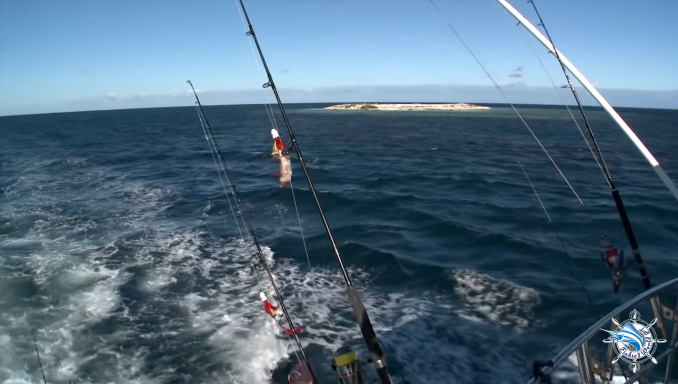Trolling is a fishing method in which baited lures are pulled behind a moving boat to catch fish. This technique is quite common because of its effectiveness in fishing.
Are spinning reels good for trolling? Yes, you can use a spinning reel for trolling! A few decades ago, we only used the bait caster for trolling. Today, spinning has been more upgraded, with more drag pressure. But despite that, you first need to make sure that you use the right spinning reel.
To learn more about this topic, you can refer to this article.
What is trolling fishing
Trolling is a method of fishing where one or more fishing lines, baited with lures or bait fish baited lures, are pulled behind a moving boat to catch fish. Trolling is used to catch pelagic fish such as salmon, and kingfish, mackerel. This is a popular fishing method because of its efficient fishing ability.
Trolling can be confused with trawling, a different method of fishing by using a grid to drag across the water instead of lines. This method is for commercial fishing purposes only.
Trolling for fish requires equipment, but you can use them if you only have one spinning. However, you still have to consider several factors.
Are spinning reels good for trolling?
Of course, you can use a reel for trolling. However, keep in mind that the reels are usually not as powerful as the reels dedicated to trolling. Even with these requirements, you may find it difficult to use your spindle compared to the alternative.
If you choose to spin, your reel should have the following features:
- Large size can hold from 400 to 600 yards of a 50-pound test braided line
- Can smoothly apply 20 pounds of drag is a factor need to be
- Produced from high-quality materials. Ability to corrosion resistance salinity resistance.
- Powerful enough to drag struggling fish through moving water
Trolling vs casting
I mean, it is just maybe just a thought process. I was hoping you wouldn’t get stuck thinking I must leave my bait. Just drag him back there add action to your base. These fish they’ll track behind that bait for an incredibly long time, and you know you’ll hear me talk about a lot you need to give them that triggering effect.
But when you add something different, whether it’s the boat turning the speed changing or you popping it, that’s a trigger in effect, and that’s exactly what it takes to make them bite.
If trolling is a power-fishing technique, casting allows us to slow down and finesse finicky fish.
When to troll:
- Find fish on an unfamiliar body of water
- Scattered fish over a large area
- Precise depth control.
- Multiple line presentations
When to cast:
- Fish concentrated in specific places
- Mixed presentations
- Finesse when it’s needed
Tips and techniques for trolling fishing
- I don’t care what kind of trolling you do before you let a lure out behind your boat. Hold it in the water next to the boat and watch it as it moves. Make sure that thing is swimming, right? You want to be sure the lure isn’t moving too slowly or too rapidly and spinning or something like that. So as you watch it next to the boat, if it doesn’t look right, try bumping up your speed a little bit or maybe pulling it back a hair until that lure swims just like it’s supposed to.
- Don’t forget about the effect of wind and current. You might set your speed perfectly. Those lures might be swimming just like they’re supposed to be, but then you make a turn, and everything can change. Suddenly, you might be going into the current or across the current instead of with it. All of a sudden, you might be going into the wind or across the wind instead of with it. All that will change your boat speed, and that will change how those lures are working their way through the water.
- Do your homework on the species you’re targeting. You know some fish, let’s take striped bass, for example, a lot of times of the year they want a really slow trolling speed 3, 3 and a half miles an hour might be all you want to be doing. On the other hand, you have some species like saying Spanish mackerel that we want to see we’re moving at 7, 8, maybe even 9 miles an hour.
- Don’t forget that these variables we’re talking about, like your boat speed, will also affect your lure depth. Now just what depth do you want those lures to be at? That depends quite a bit upon where you’re fishing, what you’re fishing for, and what time of year it is. Again, you will have to do some research to figure out where you want those lures to be riding in the water column. But, that said, the problem that a lot of people have is they may get all their lures set just right, let’s say at 15 feet down and a hundred feet behind the boat, but then they turn, boat speed changes and those lures sink deeper, or maybe they speed up, and the lures come up. You may need to either add weight, take in some line, or let out some line to keep those lures running at the right depth.
- If it’s not working, change something. Sometimes something as simple as a 1 mile an hour speed change, faster or slower, can be all it takes to start triggering bites. So if you’re trolling around and you’re not catching fish, change it up.
Conclusion
You already have the answer to the “Are spinning reels good for trolling?”. Remember, everything depends on your personal preferences. Any reels are expensive or cheap, it will still be useless if you can’t master them.
I hope this article is helpful to you. Do you have another idea?
Further reading:
- Other info about fishing in Fishingandhuntingsports
- Fishing reel Wikipedia
- When To Cast, When To Troll




